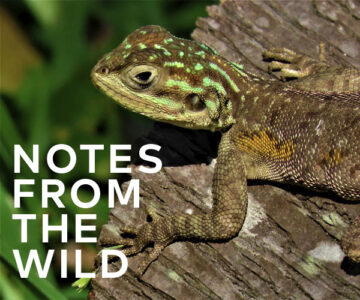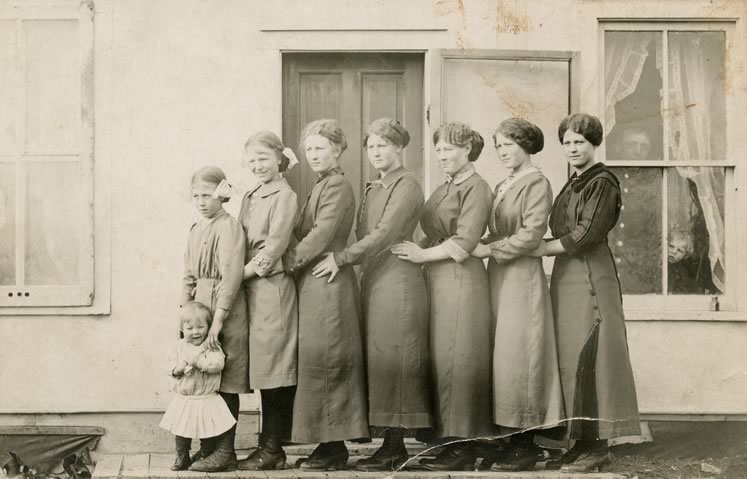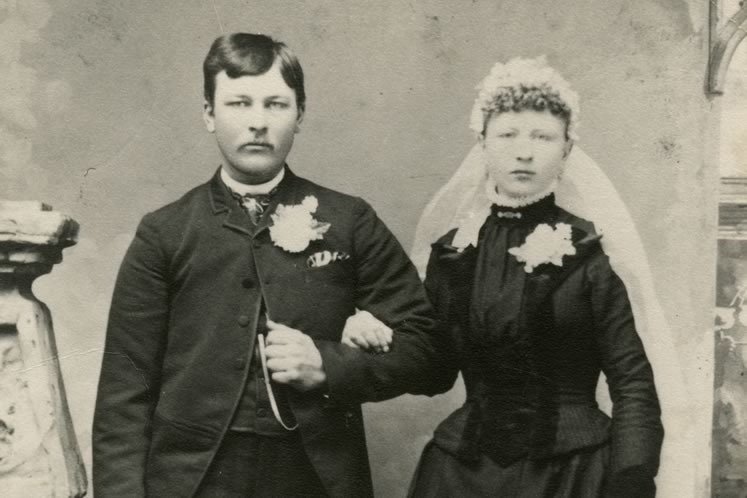Ancestral Footsteps
Michelle Grierson’s compelling first novel is a fluid mix of myth, magic and the power of “blood memory.”
“For me,” Michelle Grierson says, “it’s always been water.”
I believe her. From my seat on the author’s shady back deck, I have a distant view across the glacier-carved hillsides of Hockley Valley with the Nottawasaga coursing through its depths. On the late May morning I am visiting her home in Mono, the greying sky speaks of rain. The low-hanging limbs of the surrounding maple trees bow down beneath a weighty dew – “Evidence,” Grierson avers, “of the ocean in the forest.” To my left a concrete garden fountain burbles in unconcerned concert with the breeze.
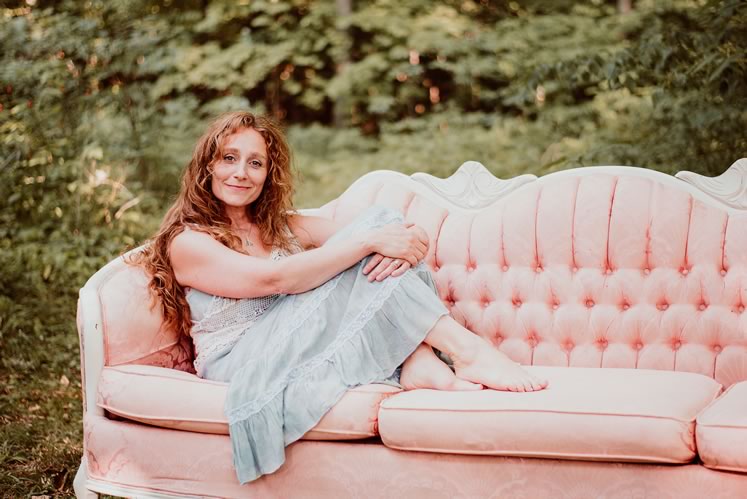
Inspired by her own Norwegian roots, Mono author Michelle Grierson’s mythical novel Becoming Leidah was published in April. Photo by Cassie McReavy.
It is more than our physical surroundings, though. Grierson, who has spent the majority of her five decades in the Headwaters region and has danced since she was a toddler, moves with wave-like ease. Her curly hair spills from her head and over her loose-fitting yoga garb like long, auburn rapids.
Grierson brings this free-flowing ethos to her art. Over the course of her career she has worked in forms as varied as collage, acrylic and oil painting, and dance and writing. I imagine a similar fluid energy pervades her classroom at Orangeville District Secondary School, where she has taught a combination of visual arts, dance and drama to mainstream students and those with special needs for 20 years. And the spirit of water certainly imbues her debut novel, Becoming Leidah, published by Simon & Schuster in April.
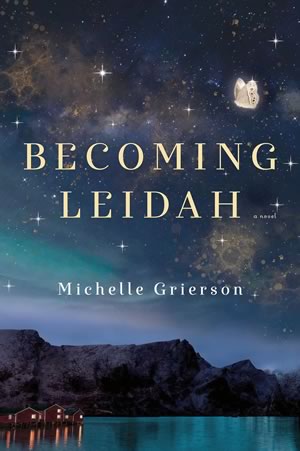 Grierson’s book takes place by the ocean, in a fictional fishing village nestled among the hinterlands of 19th-century Norway. In the novel’s lyrical opening chapters, a young woman named Maeva gives birth to a blue-skinned, white-haired girl with webbed fingers and toes. Leidah, as Maeva’s daughter is christened, proves even more extraordinary than her peculiar appearance suggests – in addition to a precocious sensibility and good humor, Leidah has strange, otherworldly abilities. She can make her own body invisible, and assume the form of objects and animals around her. Sometimes she can’t seem to stop herself from literally leaking water all over the tiny log cabin in which she, Maeva and Pieter, her “Pappa,” live.
Grierson’s book takes place by the ocean, in a fictional fishing village nestled among the hinterlands of 19th-century Norway. In the novel’s lyrical opening chapters, a young woman named Maeva gives birth to a blue-skinned, white-haired girl with webbed fingers and toes. Leidah, as Maeva’s daughter is christened, proves even more extraordinary than her peculiar appearance suggests – in addition to a precocious sensibility and good humor, Leidah has strange, otherworldly abilities. She can make her own body invisible, and assume the form of objects and animals around her. Sometimes she can’t seem to stop herself from literally leaking water all over the tiny log cabin in which she, Maeva and Pieter, her “Pappa,” live.
Maeva seems less shocked by her daughter’s bizarre gifts than she is troubled by the speed of their progression. She’s fairly mysterious herself.
As Grierson’s narrative oscillates dreamily between past (in chapters titled with an alluringly vague “What Was”) and present (“What Is”), readers first encounter Maeva at sea, as a sensuous, ethereal creature who is reluctantly brought on board Pieter’s fishing boat and feels compelled to be his bride, a role she tries to fulfill against her own nature. Onshore, she figures as a sympathetic (albeit harried) mother, haunted by failing health and desperate to regain the “treasure” Pieter hid from her when they met. As the novel progresses, the rediscovery of that treasure becomes crucial, not just for Leidah to understand her unusual abilities, but for Maeva’s survival.
Grierson, too, has Norwegian roots, courtesy of her dad, whose family migrated to the Dakotas several generations back, and then to Saskatchewan, where Grierson’s father was born. From there, he moved to Ontario and married Grierson’s mother (whose own family came from Celtic communities in the British Isles). The two lived briefly in Windsor, where the author was born, before settling in Orangeville.
Asked whether her parents were artistic, Grierson responds blithely, “Not at all.” But then clarifies more soberly: “I don’t think either of them ever found their creativity, which is sad. They were focused on everyday stuff; I was the oddball.”
Grierson remembers prancing around her parents’ den in ballet slippers as a kid. She toted a sketchbook with her from room to room, illustrating scenes from the Grimms’ fairytales she and her mother read after dinner. Her fascination with water and the desire to make myths of her own permeated every activity, so that “even taking a bath felt like an important, potentially creative experience.”
During her undergraduate studies in English literature and the visual arts, Grierson wrote poems, essays, and short stories positing water as a kind of sacred feminine (including a piece inspired by the painter Mary Pratt’s meticulous rendering of a filleted salmon, in which Grierson interprets the exposed pink fish flesh as a metaphor for women’s subjection through marriage). The plan was to publish an anthology by her late 20s, but, as Grierson acknowledges with a sigh, life got in the way.
“You become a mom and then everything kind of turns upside down,” she says. “In a great way, but also in a very challenging one.”
As a mother and teacher, Grierson’s success finishing Leidah stemmed not so much from life getting out of the way as it did from the arrival of the titular character’s voice in her head – quietly, almost imperceptibly at first, and then with increasing clarity and persistence. The author first heard Leidah in her 20s. She didn’t begin serious work on the story, though, until late 2014 when she was in her 40s. Then, all of it – mythology, landscape, character – poured out in her lucid, earnest style.
“Leidah had just been kind of waiting,” the author says, “but then, about six years ago, she really started to speak. And that was it. I was like, ‘I have to write.’”
By 2016, Grierson had a hefty book draft. At the urging of a friend, she enrolled in an online fiction-writing program hosted by Humber College and, in her rare free moments between teaching and parenting, worked to revise Leidah’s myth-like narrative alongside professors, editors and other hopeful authors. She submitted a newly pared-down version of her manuscript to Brampton’s Festival of Literary Diversity (FOLD) in 2018. When she won, she had the chance to pitch her story in front of an editor at Simon & Schuster.
Grierson admits to having had no idea what she was doing while assembling, editing, or trying to publish Leidah. Were she not so obviously grateful for the guidance she received throughout the process, her manner might be construed as blasé. Instead, she exudes a disarming humility.
“I had to Google what a ‘pitch’ was,” she laughs.
The author’s relaxed approach could also be a byproduct of her ready belief in fate. She describes her writing process as if providential powers had pulled strings at every turn. Characters that materialized in her notes for the book ended up, upon research, bearing uncanny resemblance to figures in centuries-old – and previously unknown to the author – Norse and Celtic myths. The one-eyed Norse god Odin, for instance (who takes an interest in Leidah as her shape-shifting powers develop), first appeared to Grierson in a dream.
Overwhelmed by a flood of narrative potential, Grierson researched her family history with renewed urgency. She pressed her father and cousins for sepia photographs of her austere-looking Norwegian ancestors. She registered her DNA with 23andMe, and spent hours piecing together her paternal and maternal family trees on Ancestry.com. According to the author, everything she learned only affirmed the artistic decisions she’d made in her previous work on Leidah.
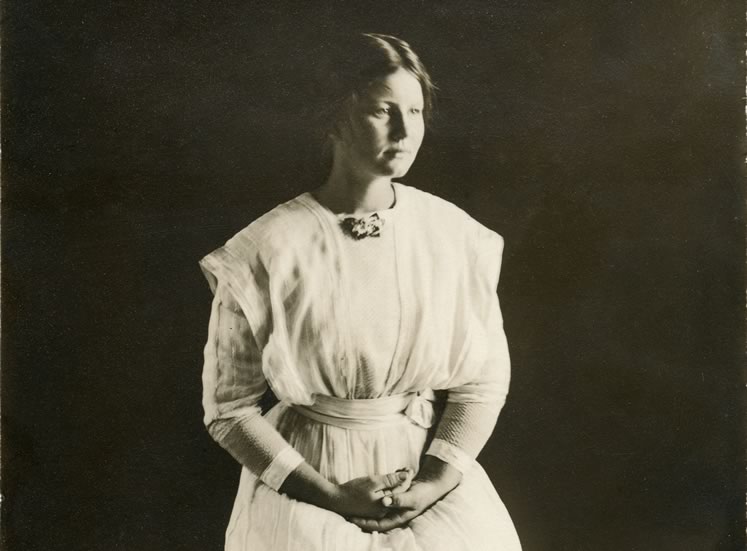
Grierson’s research into her family history affirmed her sense of the genetic inspiration for her art. Neela Swan was the author’s Norwegian great grandmother.
“It was like, for years, I’d unconsciously been responding to an undercurrent,” she says.
At no point did that undercurrent exert greater pull, however, than in carrying her to Norway during the summer of 2017. Inspired by her work on the novel, Grierson and her then-nine-year-old son flew to Oslo. The two took a tiny propeller plane up above the Arctic Circle to the Lofoten archipelago, and, over the subsequent three weeks, followed the fjord-studded coastline south by way of ferry boats and trains. It was only once she’d returned home that Grierson received her results from 23andMe. By matching genetic profiles to locations, the author retroactively discovered she had unintentionally built an itinerary centred around the sites where her paternal Norse and Saami ancestors had lived.
“I shouldn’t have been so surprised,” she says. “When we reached the 68th parallel, my son turned to me and says, ‘Mom, we found home.’”
Besides providing the rugged Scandinavian topography featured in her novel, the trip to Norway thus formed a central installment in Grierson’s broader exploration of heritage. The author had taken an interest in ancestral ghosts even before she began to write Leidah. In her 20s, her studies in dance had led her to the work of Martha Graham, an American modern dancer and choreographer who adopted the term “blood memory” to describe the knowledge and emotions we inherit from our predecessors, and which go on to inform how we experience the world. “There are always ancestral footsteps behind me, pushing me,” Graham wrote in her 1991 autobiography.
For Grierson, Graham’s work was “pure possibility.” What had been passed down by the author’s Norse and Celtic ancestors, particularly the women? Could this be the source of her lifelong love of water, for her innate knowledge of obscure Norwegian landscapes and myths?
In the decades since she came across Graham, Grierson’s understanding of heritage has taken on a biological bent. She has read widely in genealogy and epigenetics. She speaks animatedly about “transgenerational epigenetic inheritance” – or the growing body of evidence that a person’s environment and experiences before they conceive influence their offsprings’ vulnerability to certain pathological conditions. Studies of children whose parents and grandparents underwent trauma, she explains, have found significant disruptions in those children’s stress response mechanisms.
“Our bodies know things that we can’t intellectualize or rationalize,” Grierson says. “It’s exciting to watch the science catch up on this.”
Whether or not the science is there yet, Grierson didn’t hesitate to fold a kind of parental imprinting into her characterization of Leidah. The young character’s wide-reaching empathy and desire to please read, in many ways, as embedded reactions to Maeva’s oppressive situation.
Grierson’s preoccupation with blood memory has more personal motives too. She describes how her mother – to whom Leidah is dedicated – was diagnosed with a rare form of dementia some seven or eight years ago, and her condition has recently declined sharply.
“So, so much has sunk beneath the surface,” Grierson says softly. “It’s a real deep dive some days, trying to figure out what I’ve inherited.”
As she speaks, I can’t shake the feeling I’m listening to the speaker in Adrienne Rich’s feminist manifesto “Diving Into the Wreck,” who – undertaking a scuba expedition in search of drowned female literary voices – found their “way / back to this scene / carrying a knife, a camera / a book of myths,” who “came to see the damage that was done / and the treasures that prevail.”
I am also acutely aware that I could be listening to Maeva, whose own treasure wasn’t glittery or new, but something once held and since lost – something which needed rediscovering in order for her to return home. More than anything, I begin to appreciate Grierson’s attraction to the Norse view of time as a folded blanket, to the idea that “what was” and “what is” overlap. If all moments exist in perpetuity, can anything – or anyone – really be lost?
Grierson’s interest in her heritage has offered as much cause for gratitude as grief. For one thing, it has provided myriad, vivid reminders of her relative good fortune; so many of the opportunities she has enjoyed, creative or otherwise, were unavailable to older generations of women. The author’s own mother didn’t go to college until her 40s, when she studied to be a hairdresser.
Grierson has always sought to make the most of her comparative freedom. She completed her BA at the University of Guelph and her bachelor of education at Brock, with specializations in dance and drama. For a time she studied expressive arts therapy in Switzerland. She started a dance program at Orangeville District Secondary School – the first of its kind in the Upper Grand District School Board – which she plans to run until her retirement.
Grierson has also tried to open up a similar range of creative possibilities for her students. The pandemic hasn’t exactly made this easy. While she was able to meet some of her students with special needs in the classroom over the past year – “now, more than ever, it feels important to put hands on drums” – the majority of Grierson’s teaching migrated online. Still, she did her best to make space, albeit virtual, for kids to “pull stuff out of themselves that was meaningful.” As we meet in May, her students are at work on their final projects: films about living in isolation. What Grierson has seen so far has floored her.
“Despite all that sadness they’re feeling, they’re working hard,” she says, shaking her head in admiration. “There’s hope in that drive.”
And just as Maeva gathers strength from Leidah’s spirit, so too has Grierson been buoyed by the resilience of her students and son, now 13. In fact, the author avows she has been more prolific over the past year than during any other period of her life.
Again, it is easy to believe her. Large, brightly painted canvases leaned against the deck-facing side of her house. Gesturing to the forest around us, Grierson explains how she and her son passed the pandemic writing, dancing and drumming outside, breaking only for hikes and bike rides along the nearby Bruce Trail. And, were I less Covid-conscious and ready to venture inside and upstairs, I would find the walls of Grierson’s attic writing studio plastered with pages from the working draft of her second book.
Understandably, the author doesn’t want to reveal much about her novel-in-progress. She does note, though, that the narrative is culled from material included in the pre-Humber manuscript of Leidah. The new story examines related issues of female oppression and agency, this time in the context of 19th-century Paris. Grierson hints that the protagonist is a medium.
I smile, and observe that the author had a soft spot for magic. Grierson blushes. She admits it takes courage to suspend disbelief. Especially as a mother in her early 50s. Especially while telling stories about female pain. But, she maintains, there was a kind of hope and reclamation in her continued play – in elbowing her way into a historically male-dominated tradition of magical realism, and refusing, regardless of age, gender, or situation, to surrender her right to joy.
She remembers having a similar discussion with a friend a few years earlier. “When you grow old,” that friend had wished her, “may you stay wet.” Grierson laughs at the phrase as she says it, adding, “You know, rather than becoming a dry stick.”
I laugh too. We end our conversation with the agreement that staving off dryness is a worthy goal.
But as I wind my way toward home along dirt roads in the rain, I find myself repeating the original phrase. May you stay wet. I am struck: Wasn’t that Grierson’s – and, for that matter, Maeva’s – whole undertaking? A struggle to hold onto water, to that locus of artistic inspiration and strength?
Grierson’s first novel doesn’t merely riff on old Norse and Celtic stories, or meditate on inherited trauma. Instead, Becoming Leidah reads like a master project in staying wet – in remaining fluid and open to expressive possibilities, in reaching backwards for shared familial memories and myths, in reclaiming a distinctly female imagination, and continuing to play.
More Info
A reception to mark the local launch of Becoming Leidah will take place with author Michelle Grierson on Sunday, October 3 at 2 p.m. outdoors at BookLore, 121 First Street, Orangeville.
Related Stories
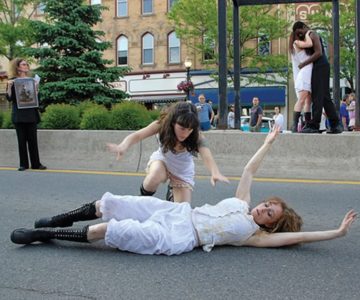
Dancing on the Edge
Jun 15, 2010 | | ArtsMichelle Grierson and Kerri-Ann Paradis Hutton use bold, contemporary dance to explore emotional and social boundaries. The result will be performed by a collective of young dancers this summer.

The Year in Books: 2020
Nov 24, 2020 | | ArtsOur annual review of new books by local authors and illustrators.

The Front Steps Project Captures a Covid Moment
Nov 24, 2020 | | ArtsNicole Lem began taking photos locally and was thrilled with the response from residents.
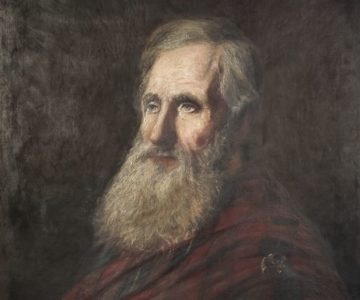
Alexander McLachlan: Our Forgotten Poet
Nov 24, 2020 | | Historic HillsA century ago Alexander McLachlan was one of the best known citizens of these hills, widely admired, respected and praised for his poetry. Today hardly anyone has heard of him. How did this happen?
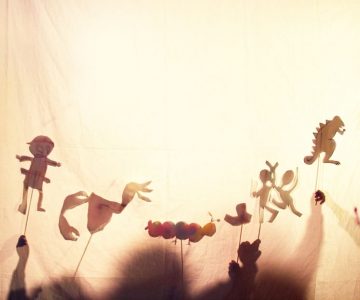
Telling Tales Out Loud
Mar 24, 2020 | | ArtsAudiobooks and podcasts have produced a resurgence in oral storytelling, but for the Dufferin Circle of Storytellers the ancient art never went away.


